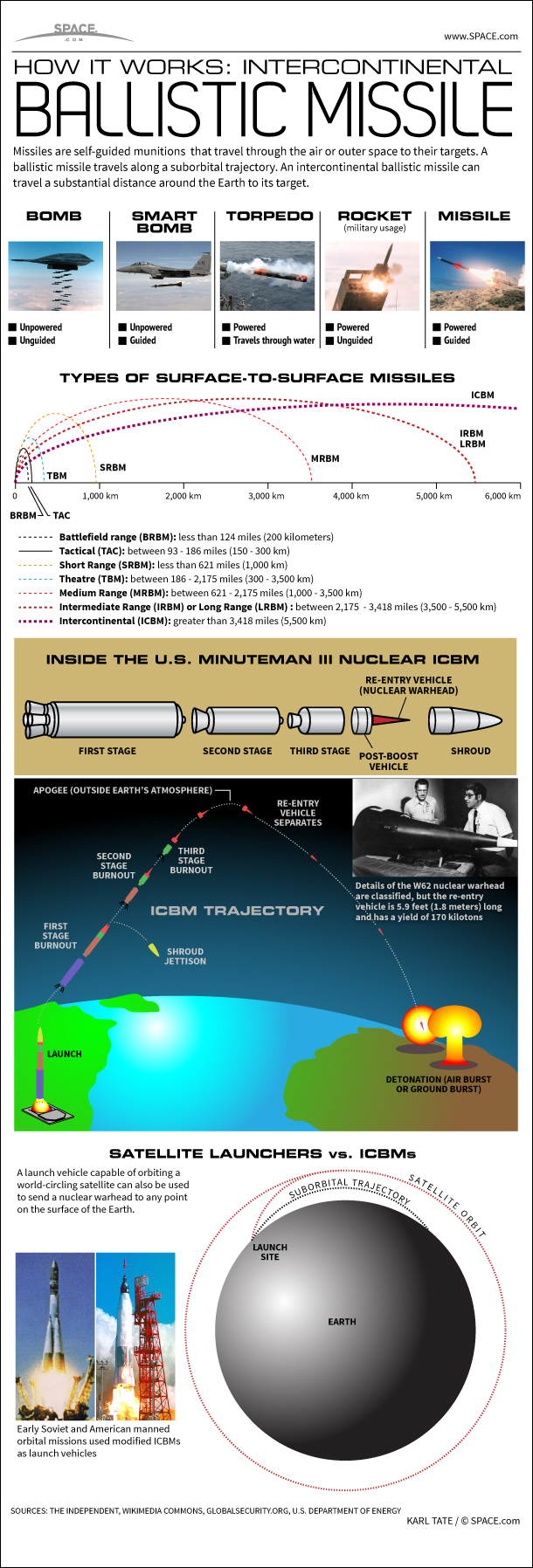Missile Defense Agency Progressing on Redesigned Kill Vehicle

HUNTSTVILLE, Alabama – The U.S. Missile Defense Agency hopes to draft a preliminary design for a new kill vehicle, a blueprint that cobbles together the best ideas from three concepts submitted by industry, by the end of the year.
U.S. Navy Vice Adm. James Syring, the MDA's director, said Aug. 12 here at the Space and Missile Defense Symposium that the agency has tasked each of the so-called Redesigned Kill Vehicle's specific subsystems to either Boeing, Lockheed Martin or Raytheon. These three companies had submitted concepts last year based in part on work done as part of a since-canceled interceptor program.
Syring declined to discuss which specific elements of the RKV each company will handle, but said the design is "production focused," aimed at reducing the number of steps it its construction requires. That addresses one of the criticisms of the current Exo-atmospheric Kill Vehicle (EKV) that tops the arsenal interceptors deployed to defend U.S. territory against long-range missile attacks. [The Most Dangerous Space Weapons Concepts Ever]

"The biggest design attribute we're after is to modularize the design with components," Syring said in an interview. "Today it's very difficult for us to build the EKV and a lot can go wrong."
The RKV program was hatched following a string of intercept failures of the Boeing-built Ground-based Midcourse Defense system, the primary U.S. territorial shield. At least two of those failures have been attributed to issues with the EKV, which is designed to destroy incoming missile warheads by force of direct impact. The Raytheon-built system has not had a significant change to its fundamental design in more than a decade, experts say.
The RKV, one of Syring's top priorities, is expected to feature significantly improved performance due in part to new maneuvering divert thrusters and increased on-demand communication capabilities. Today, Syring said, the MDA rarely communicates with the EKV, a contrast to the way it operates its regional missile defense systems.
Improved communication would allow the agency to update the vehicle in flight and build a technological foundation for one of its longer-term goals, the Multi-Object Kill Vehicle. The latter is intended to destroy multiple objects simultaneously, addressing perhaps the biggest criticisms of current missile defenses: the inability to distinguish between missile warheads and decoys and other objects.
Get the Space.com Newsletter
Breaking space news, the latest updates on rocket launches, skywatching events and more!
The MDA hopes to begin a preliminary design review for the RKV at the beginning of 2016. Boeing Missile Defense of Arlington, Virginia, Lockheed Martin Missiles and Fire Control of Dallas, and Raytheon Missile Systems of Tucson, Arizona, are expected to compete for the RKV production contract in 2018. MDA officials have said the plan is to have the new kill vehicle fielded around 2020.
Meanwhile, Syring said during his keynote speech here that the MDA is developing technology that will enable Defense Department missile warning satellites to cue its ground-based tracking radars while the target missiles are still in their boost phase. This would enable the MDA to engage attacking missiles sooner, increasing the chances of a successful intercept.
Syring said the technology is expected to be operational in 2017.
In addition, Syring said, an the Pentagon's experimental Near Field Infrared Experiment (NFIRE) satellite, built by General Dynamics and launched in 2007, is expected to reach its end of life in the next few months. The satellite was equipped with an infrared sensor to help distinguish between a missile and its hot exhaust plume.
This story was provided by SpaceNews, dedicated to covering all aspects of the space industry.
Join our Space Forums to keep talking space on the latest missions, night sky and more! And if you have a news tip, correction or comment, let us know at: community@space.com.
Mike Gruss is a veteran defense reporter and Editor-in-Chief of Sightline Media Group, which includes Army Times, Air Force Times, Dense News, Military Times and Navy Times. From 2013 to 2016, Mike served as a Senior Staff Writer for SpaceNews covering national security space programs and military space policy in the U.S. Congress. Mike earned a bachelor's degree in English and American Studies from Miami University and has previously wrote for the Journal Gazette in Fort Wayne, Indiana and the Virginian-Pilot in Virginia before joining SpaceNews. Prior to joining Sightline in 2017, he was a senior editor of FedTech magazine covering technology in federal government. You can see Mike's latest project on Twitter.










